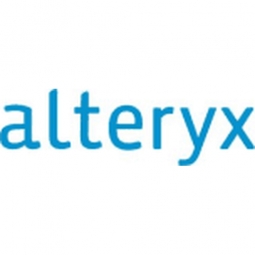下载PDF
Washington State Department of Health Leverages IoT for Efficient Data Analysis
技术
- 分析与建模 - 大数据分析
- 基础设施即服务 (IaaS) - 公共云
适用行业
- 医疗保健和医院
适用功能
- 质量保证
用例
- 疾病追踪
- 时间敏感网络
服务
- 云规划/设计/实施服务
- 测试与认证
挑战
COVID-19 迫使华盛顿州卫生部加快将分析转移到云端的努力。来自遗留事务系统的数据规模以及来自医院、学校和诊所站点的参考表超出了传统流程的承受能力,而虚拟机并不能解决问题。过去 50 年来,公共卫生资金一直不足,我们的数据系统也反映了这一点。几乎每个数据系统都是为了单一目的而构建的,过度定制并且不能与其他系统互操作。公共卫生应对措施需要快速的数据分析来为决策和公共卫生行动提供信息。因此,在分析数据之前,他们必须进行漫长而艰苦的工作来清理、转换、标准化和重组数据,然后才能查询数据。缺乏简化或集中此流程的工具,导致机构分析师需要花费很长时间进行洞察,并完成大量重复工作。
关于客户
华盛顿州卫生部是华盛顿州的一个州机构。该机构总部位于华盛顿州奥林匹亚,由州立法机构于 1989 年 5 月从华盛顿州社会与卫生服务部分离出来后创建。它的计划和服务有助于预防疾病和伤害,促进健康的生活和工作场所,提供信息以帮助人们做出良好的健康决策,并确保西澳州为紧急情况做好准备。
解决方案
Designer Cloud 位于 Microsoft Azure 上的内部 CEDAR(数据分析和报告云环境)平台内。在这里,数据科学家可以访问原始数据并为程序分析师创建分析友好的表格。然后,程序分析师可以访问这些可用的数据集,并快速探索、清理、标准化和转换云中的数据以进行分析。 Designer Cloud 对于分析师来说非常直观,使他们能够在 Designer Cloud 中比在 R 或 SAS 中更轻松地执行熟悉的功能。数据质量专家喜欢简单的标准化、不同的聚类算法以及快速将自由文本转换为分类数据的能力。
运营影响
数量效益
相关案例.

Case Study
Hospital Inventory Management
The hospital supply chain team is responsible for ensuring that the right medical supplies are readily available to clinicians when and where needed, and to do so in the most efficient manner possible. However, many of the systems and processes in use at the cancer center for supply chain management were not best suited to support these goals. Barcoding technology, a commonly used method for inventory management of medical supplies, is labor intensive, time consuming, does not provide real-time visibility into inventory levels and can be prone to error. Consequently, the lack of accurate and real-time visibility into inventory levels across multiple supply rooms in multiple hospital facilities creates additional inefficiency in the system causing over-ordering, hoarding, and wasted supplies. Other sources of waste and cost were also identified as candidates for improvement. Existing systems and processes did not provide adequate security for high-cost inventory within the hospital, which was another driver of cost. A lack of visibility into expiration dates for supplies resulted in supplies being wasted due to past expiry dates. Storage of supplies was also a key consideration given the location of the cancer center’s facilities in a dense urban setting, where space is always at a premium. In order to address the challenges outlined above, the hospital sought a solution that would provide real-time inventory information with high levels of accuracy, reduce the level of manual effort required and enable data driven decision making to ensure that the right supplies were readily available to clinicians in the right location at the right time.

Case Study
Gas Pipeline Monitoring System for Hospitals
This system integrator focuses on providing centralized gas pipeline monitoring systems for hospitals. The service they provide makes it possible for hospitals to reduce both maintenance and labor costs. Since hospitals may not have an existing network suitable for this type of system, GPRS communication provides an easy and ready-to-use solution for remote, distributed monitoring systems System Requirements - GPRS communication - Seamless connection with SCADA software - Simple, front-end control capability - Expandable I/O channels - Combine AI, DI, and DO channels

Case Study
Driving Digital Transformations for Vitro Diagnostic Medical Devices
Diagnostic devices play a vital role in helping to improve healthcare delivery. In fact, an estimated 60 percent of the world’s medical decisions are made with support from in vitrodiagnostics (IVD) solutions, such as those provided by Roche Diagnostics, an industry leader. As the demand for medical diagnostic services grows rapidly in hospitals and clinics across China, so does the market for IVD solutions. In addition, the typically high cost of these diagnostic devices means that comprehensive post-sales services are needed. Wanteed to improve three portions of thr IVD:1. Remotely monitor and manage IVD devices as fixed assets.2. Optimizing device availability with predictive maintenance.3. Recommending the best IVD solution for a customer’s needs.

Case Study
HaemoCloud Global Blood Management System
1) Deliver a connected digital product system to protect and increase the differentiated value of Haemonetics blood and plasma solutions. 2) Improve patient outcomes by increasing the efficiency of blood supply flows. 3) Navigate and satisfy a complex web of global regulatory compliance requirements. 4) Reduce costly and labor-intensive maintenance procedures.

Case Study
Harnessing real-time data to give a holistic picture of patient health
Every day, vast quantities of data are collected about patients as they pass through health service organizations—from operational data such as treatment history and medications to physiological data captured by medical devices. The insights hidden within this treasure trove of data can be used to support more personalized treatments, more accurate diagnosis and more advanced preparative care. But since the information is generated faster than most organizations can consume it, unlocking the power of this big data can be a struggle. This type of predictive approach not only improves patient care—it also helps to reduce costs, because in the healthcare industry, prevention is almost always more cost-effective than treatment. However, collecting, analyzing and presenting these data-streams in a way that clinicians can easily understand can pose a significant technical challenge.






